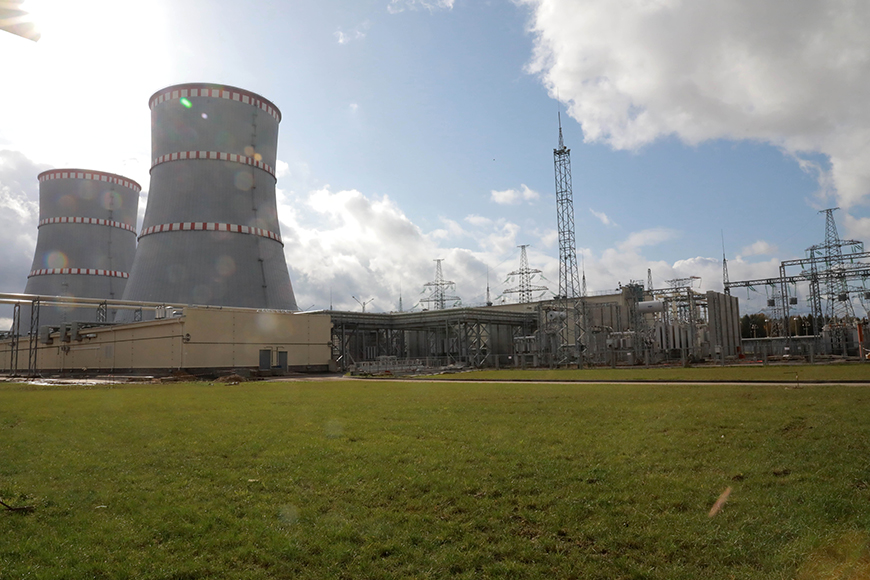SPECIAL REPORT: Defenses of the Belarusian nuclear power plant and preparations for reactor startup

The protection these air defense systems offer to the Belarusian nuclear power plant will exceed 100%, reporters were told while on a tour of the nuclear installation's defenses. A battery of the air defense missile systems Tor-M2 keeps a watchful eye on the skies above the strategic installation 24/7. The Energy Ministry arranged the media trip several months ahead of the launch of the first unit of the Belarusian nuclear power plant to demonstrate how the facility will be defended, why an aircraft cannot drop on the nuclear power plant, and what scenarios the local firefighters and rescue workers practice to respond to. By the way, this imagery of the first unit has not been made available to the general public before.
One of the air defense installations designed to protect the Belarusian nuclear power plant is located right next to the power plant. An air defense missile system Tor-M2 can be put on alert within only three minutes. Once on alert, the Tor-M2 system will be able track aerial targets in order to destroy them when ordered to.

“The security of the Belarusian nuclear power plant is a high-priority task, including for the Belarusian army. Air defense is one of the aspects in efforts to secure the Belarusian nuclear power plant. At present you can rest assured that the Tor-M2 system is the most effective small-range air defense solution. It has been confirmed by its technical parameters and actions of the combat crews during exercises,” Commanding Officer of the 1146th Guards Air Defense Missile Regiment Andrei Dolbik said.
The regiment was deployed to protect the Belarusian nuclear power plant on 1 December 2018 or nearly one year ago. No emergency situations have been registered since then.
A Tor-M2 system can detect targets 32km away. It can destroy helicopters, aircraft, high-precision weapons, and unmanned aerial vehicles that fly up to 12km away at altitudes of up to 10km as fast as 2,500kmph. One unit can destroy four targets. Four units can destroy 16 aerial threats by launching missiles with an interval of only 2-3 seconds, Andrei Dolbik said. Even aerial targets as small as 5cm in diameter will not be able to avoid detection and destruction.
Moreover, the regiment practices destroying complicated targets – target missiles 9-12cm in diameter and slightly more than one meter in length – in exercise areas every year. All the combat crews have taken part in live-fire exercises.
“In other words, all the combat crews in the regiment are well-trained. We keep in touch with radio warfare army units in order to be able to switch duty units and assets to high alert in time. All the positions can visually observe the aerial situation around the nuclear power plant round the clock,” the commanding officer noted.
“It will be the most protected facility,” Andrei Dolbik said while pointing in the direction of the nuclear power plant.

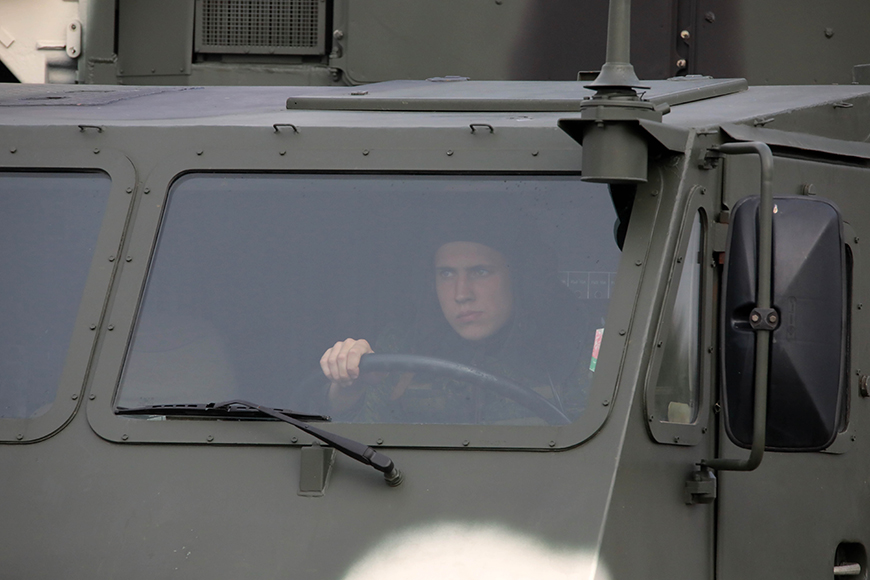
A Tor-M2 system can operate without human input. “You can turn it on, go away to make a cup of coffee while the unit will be able to find the target on its own, track it, and classify it in order to find out what it is. It is not a simple weapon but a highly automated piece of equipment. Nearly a robot,” the military said.
Proximity to the state border does not bother the military personnel. Taking care of the nuclear power plant's security is what matters. It is the only combat task performed in time of peace. Generally speaking, it does not matter whether the border is 100km away or 5km away. The responsibility remains unchanged.
The units that protect the Belarusian nuclear power plant also have a drone jammer Groza R2. It is a Belarusian weapon designed to stop unauthorized drone flights.

When the matter of security of the nuclear power plant is raised, people often ask whether the Belarusian nuclear power plant will be able to handle the fall of a large aircraft like a Boeing.
“We have four Tor-M2 units here and 16 missiles. What will happen when those strike the aircraft? Very small bits and pieces,” the military personnel said. They have no doubt about the reliability of the air defenses.
The local fire station is another installation of strategic importance for the safety and security of the Belarusian nuclear power plant. The fire station received modern hardware in 2015.
The firefighters can get in gear and leave the station within one minute. The response time after that will depend on how events unfold at the site of the emergency.
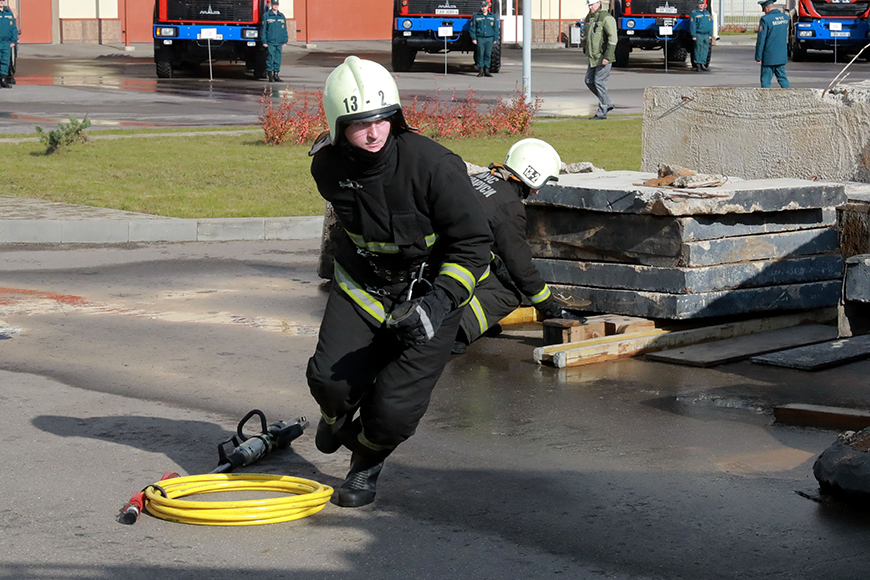
“The unit has all the firefighting technology it needs. Chemical and radiation protection specialists are part of the crew. The personnel regularly visit the Chernobyl exclusion zone for exercises in the Polesie State Radiation and Ecological Reserve,” said Konstantin Lazovsky, chief of the nuclear power plant firefighting and rescue unit.
The firefighting and rescue unit employs people from Brest, Vitebsk, Gomel, Orsha, Borisov, Minsk, and Grodno. It is a national team, Konstantin Lazovsky jokes.
The firefighters demonstrated how they will respond to emergencies, how they will get people out of the debris, and how they will handle dangerous chemicals.
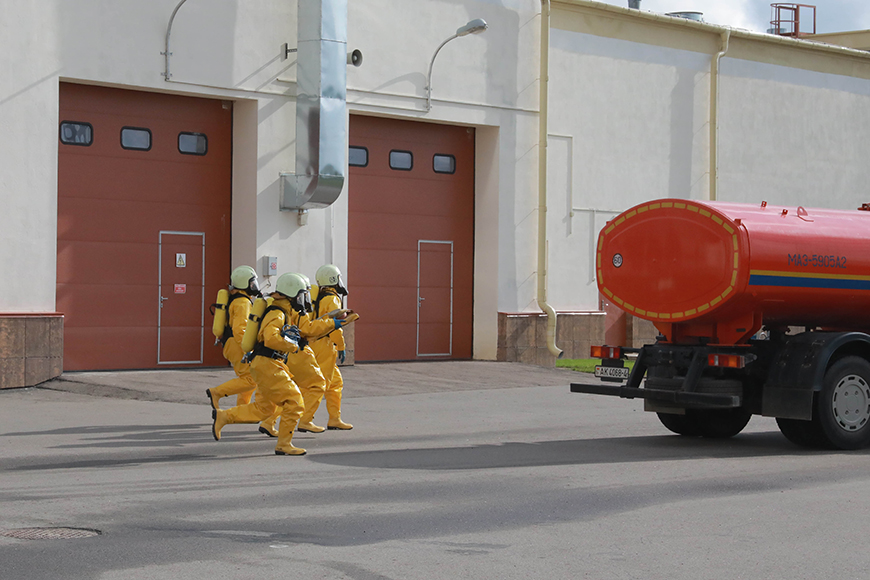
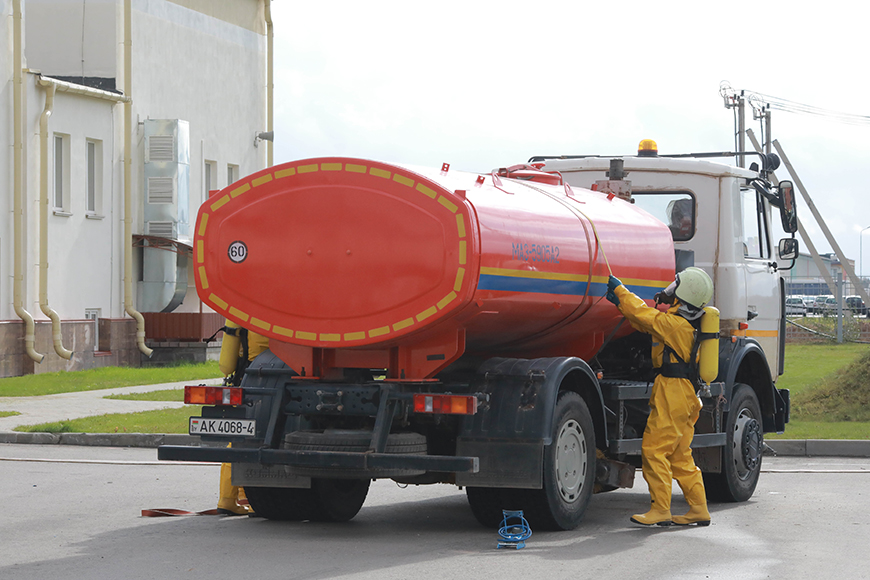
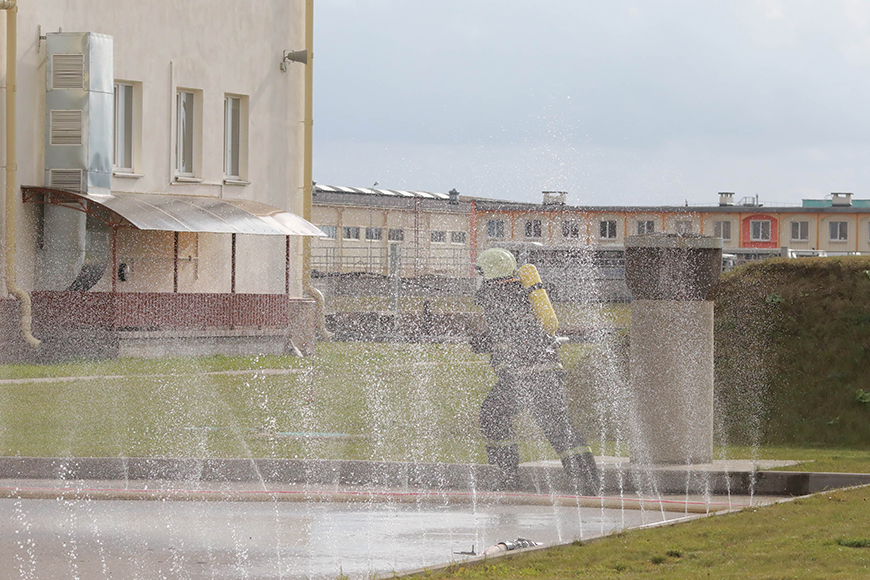
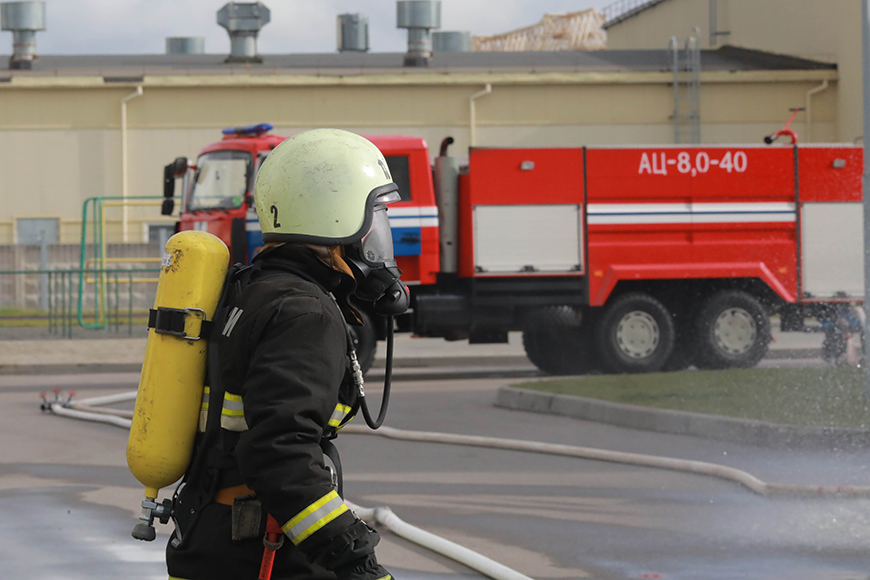

Preparations to commission the first unit are in progress in the turbine unit building.


“Kilometer zero” of the nuclear power plant is a metalclad distribution substation, which will collect the electricity the power plant will generate in order to pass it on to the national power grid. Representatives of the nuclear power plant administration have not specified when exactly it will happen.


The physical readiness of the nuclear power plant exceeds 80% (97% -- the first unit, 70% -- the second one).
While talking about the readiness of the first unit of the Belarusian nuclear power plant, ASE Company Vice President and supervisor of the Belarusian nuclear power plant construction project Vitaly Polyanin said: “We are getting ready for the most important part of the tests – hot trials of the reactor unit. In essence, it will be a complete imitation of a live nuclear reactor. Only genuine fuel will be replaced with fuel rod array imitators. This step is supposed to confirm the quality of installation and assembly work. It will also confirm the reactor unit's compliance with design parameters and performance parameters.”
Nuclear fuel is supposed to be delivered to the site by the end of the year. It has been made by Novosibirsk Chemical Concentrates Plant.
The reactor startup of the first unit is expected to happen in January 2020.
